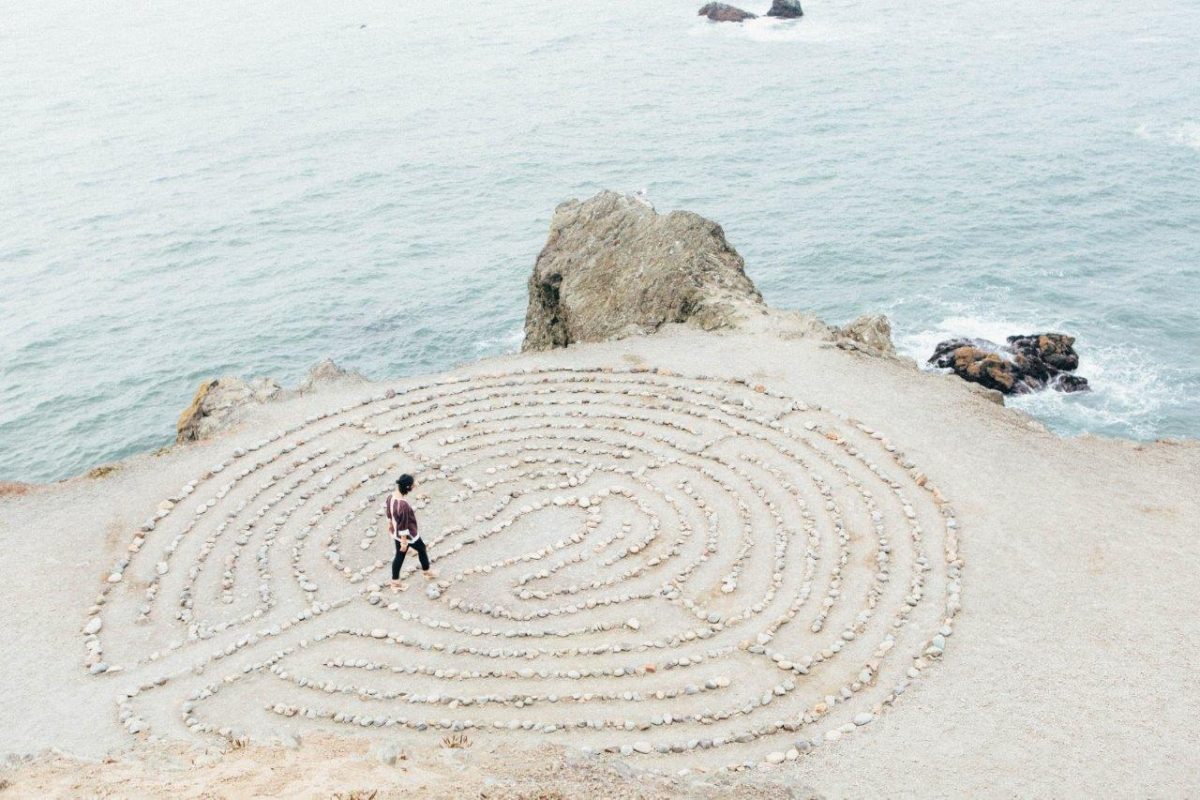Rev Dr David Ferguson, Presbytery Officer for the Uniting Church WA, reflects on using the labyrinth as a spiritual practice during the COVID-19 global pandemic.
In this time, where we here in Australia have hopefully passed through the initial stage of seeking to gain rapid control over the spread of this pandemic, we are in a space where people have more freedom to move and greet.
However, public places of gathering such as churches, restaurants and coffee shops are closed. You may well object that the last two of this phrase are still open for business, but they have moved to takeaway and home delivery modes of operation, and I would argue that so has the first.
For me, the question is: how might we build in these areas during the times in which our buildings are closed by regulation?
We, as congregations and as a denomination, have a large amount of property that exists in prominent locations. I would like to discuss an activity that can be participated in both on the property and in their homes, and can use either a grassed area or the now empty car parks that we own – the labyrinth. I have heard that there have been a number of congregations that have used labyrinths in the past in this Presbytery, and that there still may be one or two still to be found around the traps.
I have many friends who have been involved in walks such as the Cradle Mountain trails in Tasmania or the Great Ocean Walk in Victoria, or even historically significant walks such as the Kokoda trail or journeying over Flanders Fields.
Some of my Christian (and even non-Christian friends) have been on some of the classic Christian pilgrimages such as the Camino de Santiago. At these times, I must admit that these seem a long way away. However, there is a particular something about sharing a walk in a significant place with others, even if you are in different times.
For Christians, there can be added spiritual dimensions enjoyed by participation in such practices with appropriate preparation and guidance.
In many ways the spiritual practice of the labyrinth is similar. While not specifically Christian in origin, but rather adopted from other ancient spiritual traditions, labyrinths have been installed in cathedrals and many other spaces so that people can have the experience some of the dimensions of a pilgrimage without leaving their home communities.
These dimensions are the willing and prayerful suspension of life for a time to seek God, the embodied action of journeying towards God, spending time with God in contemplation and prayer, the journey back to the starting point, and finally a mindful return to life.
A discussion of the place that the labyrinth has played in the church historically can be found here.
A more extended discussion of the spiritual process of using a labyrinth can be found here, but it would need local adaptation as the direction that more than one person may use a labyrinth at a time comes from a time before social distancing.
In terms of practicalities, I have seen a labyrinth that has been painted on to a tarpaulin so that it can be installed, packed up and re-used at a different place or time. They can be temporarily set up on grass areas by marking with flour, on a more permanent basis by using lime or even marked out with bricks or stones put upon or embedded into lawns.
They can also be chalked or painted onto surfaces such as concrete or bitumen. If they were to be used in a public space, it would be useful to provide documentation or signage to invite and direct people in their use. It may also be useful to provide people with a Bible passage to reflect upon as they participate in the journey.
One final element of this practice that can be used to link a labyrinth at a shared point with those who are unable to leave their homes is to create and distribute a finger labyrinth (preferably using the same pattern that the walkers are using) with directions that people can follow at home. An example of this with a printable template can be found here.
In terms of practicalities, there are many labyrinth building guides available online, but three different designs can be sourced here.
If you wish to use congregation land to build a labyrinth, this will require gaining permission from the Church Council, as will the use of any public lands involve gaining permission from the appropriate local authority or the land owner in the case of private property.
While this particular form of spirituality may not suit, or even be acceptable, for all Christians or all congregations, I have presented this as a form of practice that we may share in outside of the walls of our church buildings and one that I have found particularly useful.
I would like to invite our congregations to consider what practices they might employ together at this time when physical gathering is not an option.
Top image by Ashley Batz on Unsplash.
